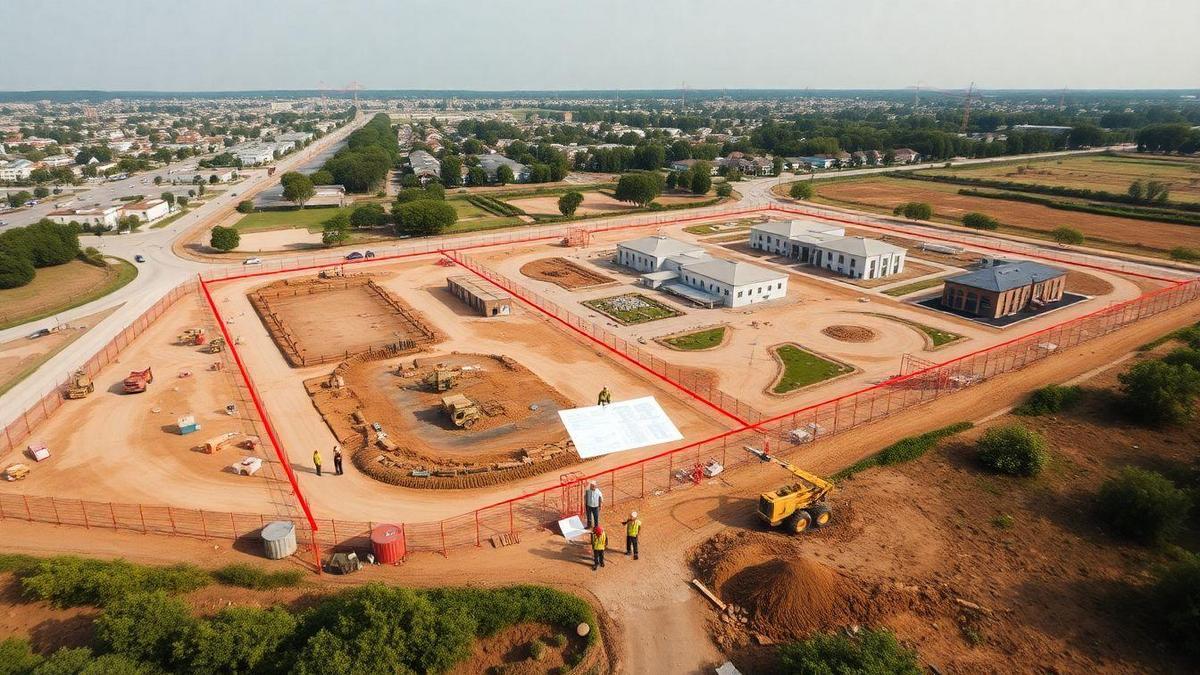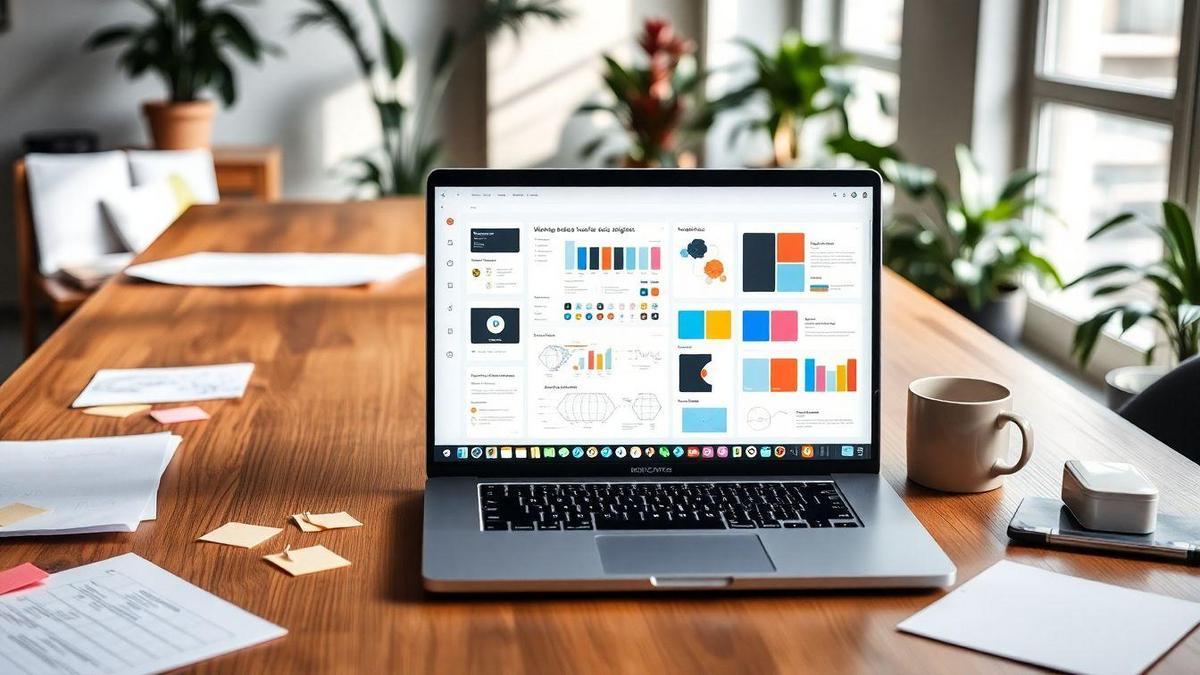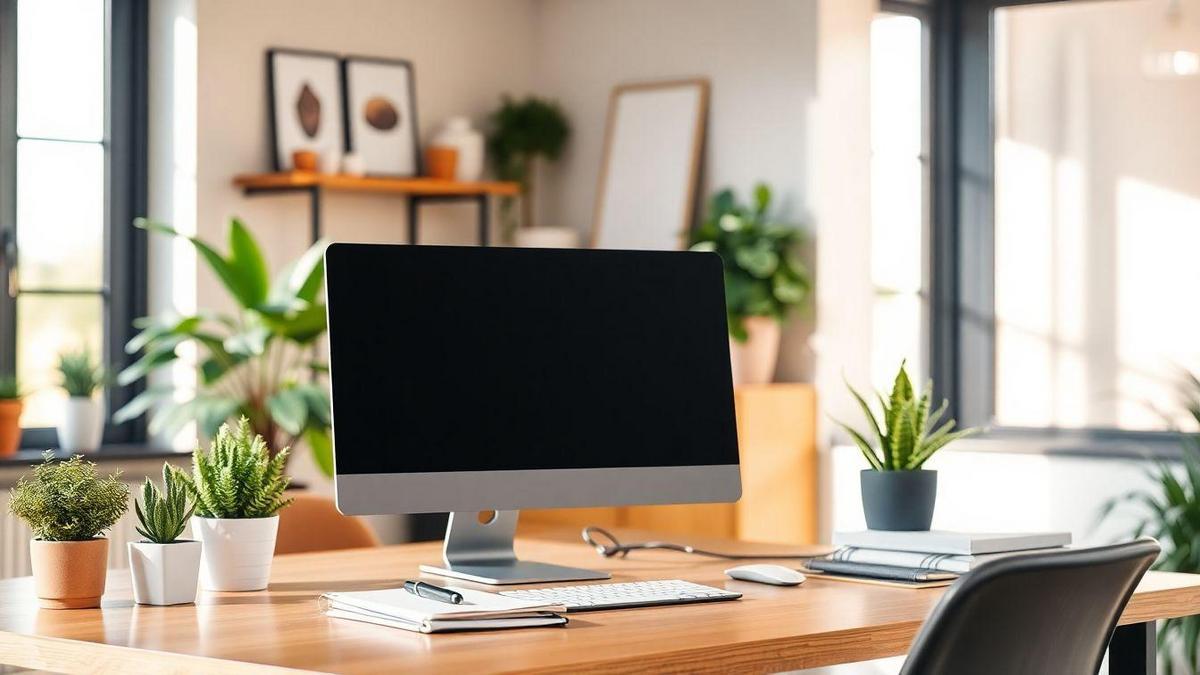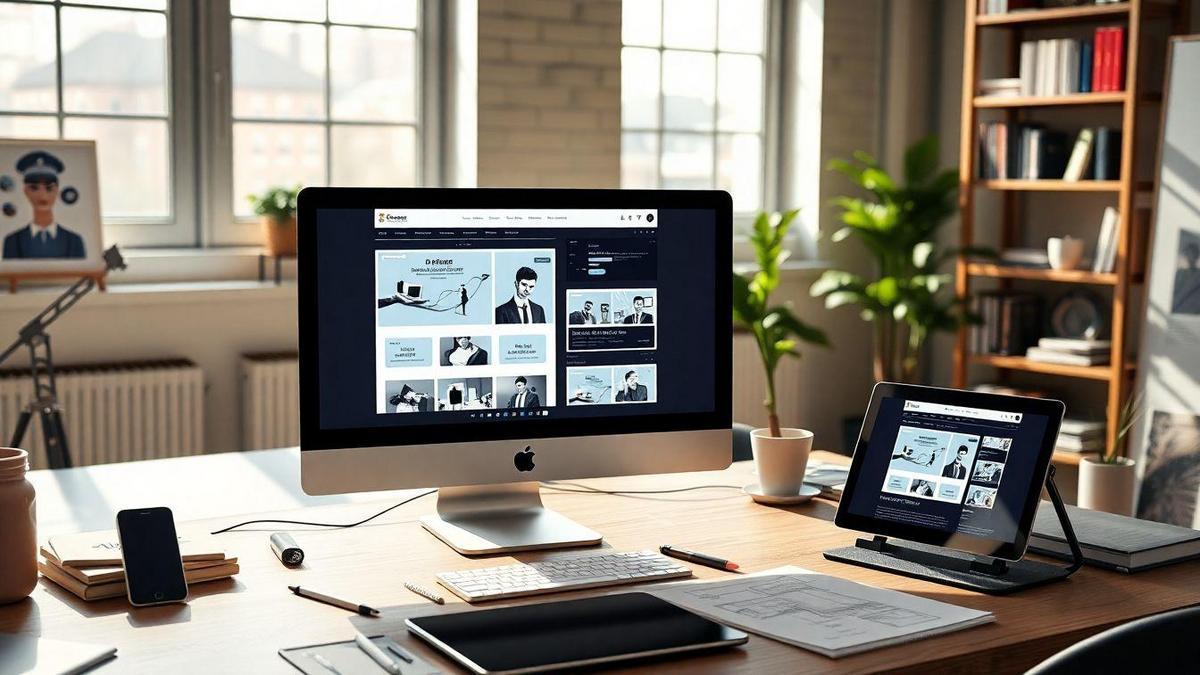How to plan the site layout before you create is a crucial first step in building a successful website. Let’s dive into what site layout planning really is, why it matters, and how you can do it well. You’ll learn about the key benefits of an effective layout and discover simple steps to map out your website like a pro. From organizing your pages clearly to creating user-friendly navigation, we’ll cover everything you need to know to enhance your site’s user experience. Get ready to make your website not just look good but work well too!

Understanding Site Layout Planning
What is Site Layout Planning?
Site layout planning is all about organizing the elements on your website. Think of it like drawing a map for a treasure hunt. You want to make sure that visitors can find what they’re looking for quickly and easily. This involves deciding where to place things like your menu, images, and text.
Why is Site Layout Important?
A good site layout is crucial because it affects how users interact with your site. If the layout is confusing, visitors might leave before they find what they need. Imagine walking into a store where everything is scattered all over the place. You wouldn’t want to shop there, right? The same goes for your website!
Key Benefits of Effective Site Layout
Here are some key benefits of having a well-thought-out site layout:
| Benefit | Description |
|---|---|
| Improved User Experience | Visitors can find what they need without frustration. |
| Higher Engagement | A clear layout keeps users on your site longer. |
| Better SEO | Search engines favor sites that are easy to navigate. |
| Increased Conversions | A logical layout can lead to more sales or sign-ups. |
By focusing on site layout, you’re setting yourself up for success. You’re not just creating a website; you’re building a pathway for your visitors.
Steps to Plan Your Site Layout
Outline Your Website Goals
Before you dive into creating your website, it’s important to outline your goals. Think about what you want your site to achieve. Do you want to sell products, share information, or build a community?
Here’s a quick checklist to help you:
- Identify Your Audience: Who are you trying to reach?
- Define Your Purpose: What do you want visitors to do?
- Set Measurable Goals: How will you know if you’ve succeeded?
By being clear about your goals, you can create a site that really speaks to your visitors.
Create a Sitemap
Now that you have your goals in mind, it’s time to create a sitemap. A sitemap is like a roadmap for your website. It shows how all your pages are connected.
Here’s a simple way to lay it out:
| Page Name | Purpose |
|---|---|
| Home | Welcome visitors and guide them |
| About Us | Share your story and mission |
| Products/Services | Showcase what you offer |
| Blog | Provide valuable content |
| Contact | Allow visitors to reach you |
This table helps you see the big picture. Each page has its own role, making it easier for your visitors to find what they need.
Organizing Your Pages for Clarity
When you organize your pages, think about clarity. You want your visitors to find information without feeling lost. Here are some tips:
- Group Similar Pages: Keep related content together.
- Use Clear Labels: Make sure your menu items are easy to understand.
- Limit Menu Items: Too many choices can confuse visitors. Stick to the essentials.
By keeping your layout clear and organized, you’ll make it easy for visitors to navigate your site.

Website Structure Design Essentials
How to Structure Your Website
When you start thinking about how to plan the site layout before you create, it’s like sketching a blueprint for your dream home. You want everything to fit together nicely. A well-structured website helps visitors find what they need without feeling lost. Here are some key points to remember:
- Keep it Simple: Use clear labels for your menu. This helps visitors know where to click.
- Logical Flow: Arrange your pages in a way that makes sense. For example, start with a homepage, then link to your services, and finally, your contact page.
- Visual Hierarchy: Use headings and subheadings to guide the eye. Big, bold titles catch attention, while smaller text gives details.
Common Structures for Websites
There are a few common ways to set up your website. Here’s a quick look:
| Structure Type | Description |
|---|---|
| Hierarchical | A tree-like structure with a main page and subpages. |
| Sequential | Pages that lead visitors through steps, like a tutorial. |
| Matrix | A grid where users choose their path, like an online course. |
| Database | Content is stored in a database and shown as needed, like an e-commerce site. |
Choosing the Right Structure for Your Needs
Finding the right structure is like picking the right tool for a job. Think about your audience and what they want. Ask yourself:
- What information do they need first?
- How do they want to navigate your site?
- What actions do you want them to take?
For example, if you run a blog, a hierarchical structure might work best. But if you’re selling products, a database structure could be more effective. Tailor your site to fit your goals and your visitors’ needs.
Effective Site Navigation Techniques
Importance of Easy Navigation
When you create a website, easy navigation is key. Imagine walking into a store where everything is scattered. You’d feel lost, right? The same goes for your website. If visitors can’t find what they need quickly, they’ll bounce away faster than a rabbit on the run. Good navigation helps users find their way around, making their experience pleasant. Plus, it keeps them coming back for more!
Tips for Creating User-Friendly Navigation
Creating user-friendly navigation is like setting up clear road signs on a highway. Here are some tips to keep in mind:
- Keep it Simple: Use clear labels for your menu items. Avoid jargon that might confuse visitors.
- Limit Menu Items: Too many choices can overwhelm. Stick to 5-7 main items.
- Use Drop-down Menus: These can help organize content without cluttering your main menu.
- Make it Visible: Place your navigation bar at the top of the page or on the side where it’s easy to see.
| Tip | Description |
|---|---|
| Keep it Simple | Use clear, straightforward labels. |
| Limit Menu Items | Stick to 5-7 main items to avoid confusion. |
| Use Drop-down Menus | Organize content without clutter. |
| Make it Visible | Position it where users can easily see it. |
Enhancing User Experience with Clear Menus
Think of your menu as a friendly guide. A clear menu helps users feel comfortable exploring your site. You can enhance their experience by:
- Highlighting Active Pages: Use different colors or styles to show which page visitors are on.
- Mobile Responsiveness: Make sure your navigation works well on phones and tablets. Many users will visit your site on these devices.
- Search Bar: Adding a search bar helps users find specific content quickly.
When you focus on these elements, you create a welcoming atmosphere that invites users to stay longer.

User-Friendly Layout Tips
What Makes a Layout User-Friendly?
A user-friendly layout is all about making it easy for visitors to find what they need. Think of it like a well-organized room. When everything is in its place, you can move around without bumping into things. Here are some key points to consider:
- Simple Navigation: Your menu should be clear and easy to understand. Use common terms for your pages.
- Consistent Design: Stick to a uniform color scheme and font style. This creates a sense of harmony.
- Responsive Design: Your site must look good on both computers and mobile devices. More people browse on their phones these days.
- Clear Calls to Action: Make it obvious what you want visitors to do next, whether it’s signing up, buying, or reading more.
Examples of User-Friendly Designs
Let’s look at a few examples that shine in the user-friendly department:
| Website | Features | Why It Works |
|---|---|---|
| Amazon | Simple search bar, easy categories | You can find products quickly and easily. |
| Wikipedia | Clean layout, clear headings | Information is easy to digest. |
| Airbnb | Large images, straightforward booking | It feels inviting and easy to use. |
These sites show how a good layout can make a big difference in user experience.
Applying User-Friendly Principles to Your Site
Now, how do you take these ideas and apply them? Here are some steps to follow:
- Map Out Your Content: Before diving in, sketch a rough layout on paper. Think about what pages you need and how they connect.
- Use White Space: Don’t crowd your pages. Leave some breathing room to make content easier to read.
- Test with Real Users: Ask friends or family to navigate your site. Their feedback can reveal areas for improvement.
By focusing on these principles, you can create a site that feels welcoming and easy to use.
Web Design Best Practices
Key Principles of Good Web Design
When you’re diving into web design, there are a few key principles you should keep in mind. Think of these as your guiding stars. They will help you create a site that not only looks good but also works well. Here are some essentials:
- User-Friendly Navigation: Make it easy for visitors to find what they need. Use clear labels and a simple menu.
- Responsive Design: Your site should look great on all devices, whether it’s a phone, tablet, or desktop.
- Consistent Style: Use the same fonts, colors, and layout throughout your site. This creates a sense of unity.
- Fast Load Times: No one likes waiting! Optimize images and streamline your code to keep things speedy.
Common Mistakes to Avoid
Now that you know the principles, let’s talk about some common mistakes that can trip you up. Avoid these pitfalls to keep your site running smoothly:
| Mistake | Why to Avoid It |
|---|---|
| Cluttered Layout | It confuses visitors. |
| Poor Color Choices | Hard-to-read text drives users away. |
| Ignoring Mobile Users | Many people browse on their phones. |
| Lack of Clear Calls-to-Action | Users need direction to take action. |
Ensuring Your Site is Visually Appealing
Making your site visually appealing is all about the details. Here are a few tips to help you shine:
- Use High-Quality Images: Blurry or pixelated images can make your site look unprofessional.
- Whitespace is Your Friend: Don’t crowd everything together. Whitespace helps to guide the eye and makes content easier to read.
- Typography Matters: Choose fonts that are easy to read and fit your brand’s personality.
Remember, when you’re planning your site layout, think about how to make it user-friendly and visually pleasing. This will keep your visitors coming back for more!

Intuitive Site Architecture
What is Intuitive Site Architecture?
Intuitive Site Architecture is all about creating a layout that feels natural and easy for you and your visitors. Think of it like a well-organized closet. When you open the door, you want to find what you need without digging through a pile of clothes. Similarly, a website should guide users effortlessly to the information they want.
Benefits of an Intuitive Design
Having an intuitive design can be a game-changer for your website. Here are some great benefits:
- Improved User Experience: Visitors can find what they’re looking for quickly.
- Higher Engagement: When users are happy, they’re likely to stick around longer.
- Better SEO: Search engines love sites that are easy to navigate.
- Increased Conversions: A smooth journey can lead to more sign-ups or sales.
| Benefit | Description |
|---|---|
| Improved User Experience | Users can navigate easily and find info fast. |
| Higher Engagement | Happy visitors spend more time on your site. |
| Better SEO | Search engines rank user-friendly sites higher. |
| Increased Conversions | More satisfied users lead to more sales. |
Creating a Seamless User Journey
To create a seamless user journey, think about how your visitors will flow through your site. Start by mapping out the main sections and pages. Consider what information they might need and how they’ll want to access it.
Here are a few tips to help you out:
- Keep it Simple: Use clear labels for your menus.
- Use Visuals: Images and icons can guide users faster than text.
- Test It Out: Ask friends or family to use your site and give feedback.
When you plan the site layout before you create, you’re setting the stage for a smooth experience. It’s like laying down a welcome mat at your door; it invites users in and makes them feel at home.
Content Organization Strategies
How to Organize Your Content Effectively
When you’re building a website, organizing your content is key. Think of it like arranging furniture in a room; you want everything to flow nicely. Here are some simple steps to help you get started:
- Create a Content Inventory: List all the content you have or plan to create. This helps you see what you’ve got.
- Group Similar Topics: Put related content together. This makes it easier for visitors to find what they need.
- Use Clear Labels: Make sure your headings and categories are easy to understand. This guides visitors through your site.
- Think About Navigation: How will users find their way around? A clear menu can make a big difference.
Prioritizing Content for Your Audience
You want to create content that speaks to your audience. To do this, consider these points:
- Know Your Audience: Who are they? What are their interests? Tailoring your content to their needs is crucial.
- Highlight Key Information: Make sure the most important info stands out. Use bold text or bullet points to catch their eye.
- Ask for Feedback: Don’t be shy! Ask your audience what they want to see. This can help you adjust your content strategy.
Structuring Content for Better Engagement
Engagement is all about keeping your audience interested. Here’s how to structure your content for better interaction:
| Structure Type | Description |
|---|---|
| Headings | Use clear headings to break up text. This helps readers skim through easily. |
| Short Paragraphs | Keep paragraphs short and sweet. This makes reading less overwhelming. |
| Visuals | Include images or videos. They can make your content more appealing and easier to digest. |
| Calls to Action | Encourage readers to take the next step, whether it’s signing up for a newsletter or checking out a product. |
Remember, the goal is to keep your visitors engaged and wanting more!

Responsive Design Principles
Why Responsive Design Matters
Responsive design is like having a magic wand for your website. It allows your site to look great on any device, whether it’s a smartphone, tablet, or desktop. In today’s world, more people are using their phones to browse the internet. If your site isn’t responsive, you could be losing visitors faster than a rabbit in a race!
Think about it: if someone visits your site on their phone and has to zoom in or scroll sideways, they’re likely to leave and find a site that’s easier to use. A responsive design not only keeps your visitors happy but also helps with your search engine ranking. Google loves sites that are mobile-friendly!
Tips for Making Your Site Responsive
Creating a responsive website doesn’t have to be rocket science. Here are some handy tips to get you started:
- Use Flexible Grids: Instead of fixed-width layouts, use percentages to set widths. This way, your site can adjust to different screen sizes.
- Media Queries: These are like magic spells that change your site’s style based on the device. Use them to adjust images, text size, and layout.
- Responsive Images: Make sure your images resize correctly. Use CSS to set a maximum width of 100% so images don’t overflow their containers.
- Test, Test, Test: Always check how your site looks on different devices. Use tools like Google’s Mobile-Friendly Test to see how you’re doing.
Adapting Your Layout for All Devices
When you’re planning your site layout, think about how it will adapt to various devices. Here’s a simple table to help you visualize how different elements should change:
| Element | Desktop | Tablet | Mobile |
|---|---|---|---|
| Header | Full width | Full width | Stacked layout |
| Navigation Menu | Horizontal | Horizontal or dropdown | Dropdown only |
| Images | Large | Medium | Small |
| Text Size | Regular | Slightly larger | Larger |
By keeping these adjustments in mind, you’ll make your site user-friendly, no matter what device someone is using.
Frequently Asked Questions
How should I start planning my site layout?
Start by sketching the basics. Think about what you want on every page.
What tools can I use to create my site layout?
You can use tools like Canva, Lucidchart, or even pen and paper! Find what works for you.
How to plan the site layout before you create?
List your main sections! Think about navigation and user flow.
How important is mobile responsiveness in my site layout?
Very important! Many users will visit from their phones. Keep it simple and clear.
How do I test my site layout before launching?
Get feedback from friends or use online tools. Make changes based on what you learn!

Lucas is a technical SEO expert who has optimized over 200 websites and managed Google AdSense and Ad Manager campaigns since 2016. At ReviewWebmaster.com, he shares strategies to boost organic traffic and monetize every single visit.
Types of articles he writes:
-
“How to Increase Your Blog’s RPM with Simple Tweaks”
-
“Technical SEO Checklist for WordPress Sites”
-
“Complete Beginner’s Guide to Google Ad Manager”
Why it works:
Lucas brings a confident, analytical, and performance-driven voice to the site — perfect for readers looking for actionable, results-oriented content.
